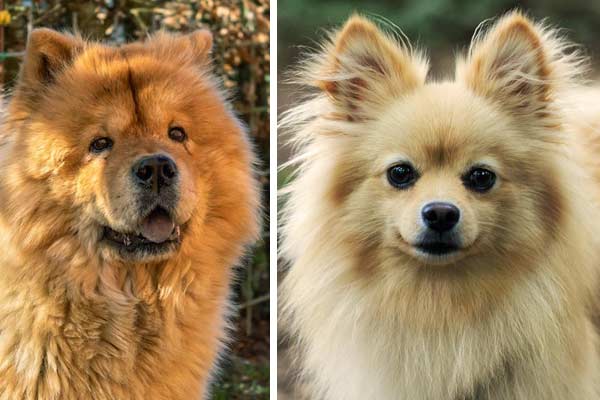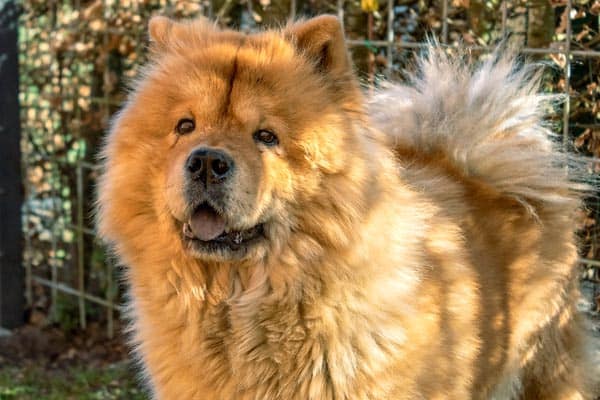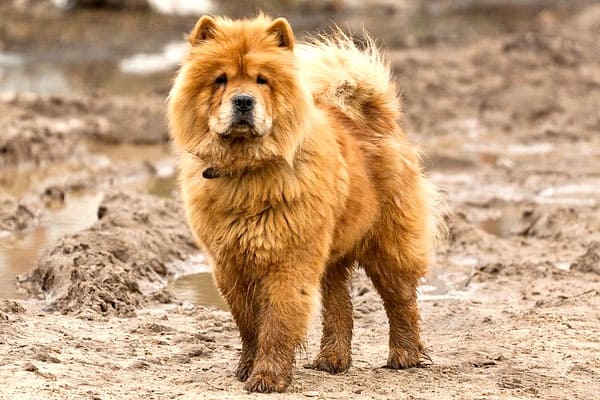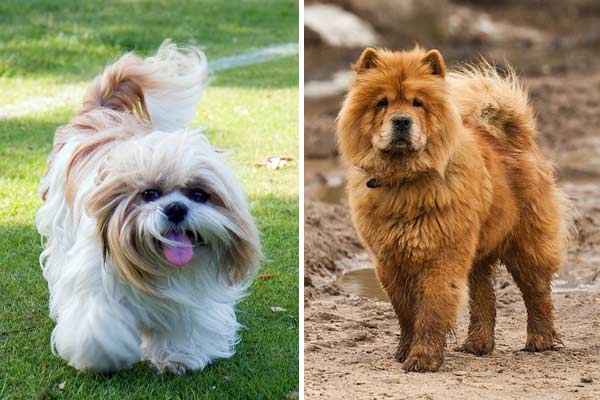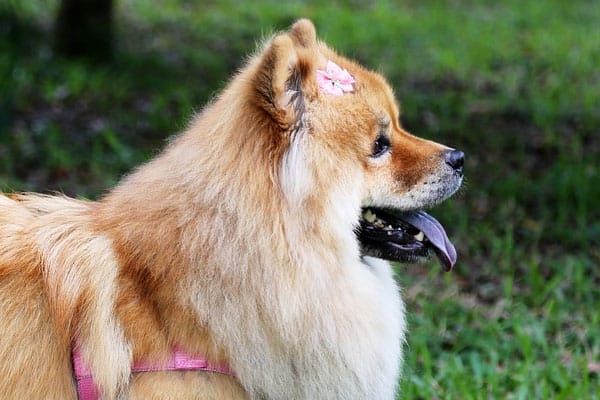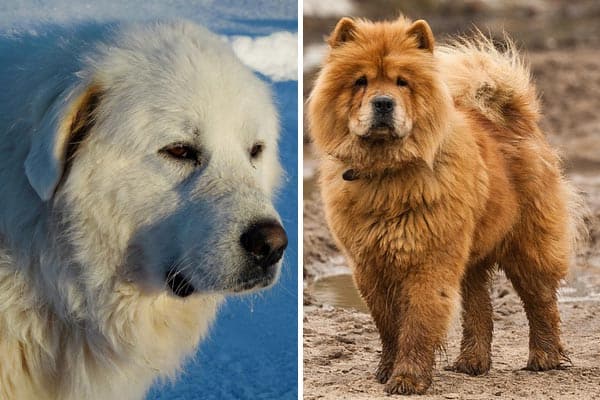Can Chow Chow Live in Hot Weather? Answers to a Burning Topic
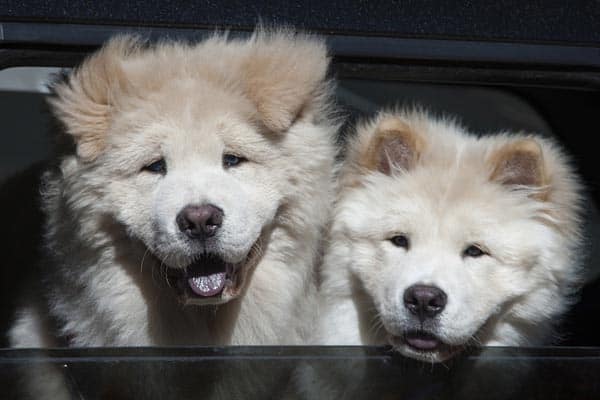
Dog owners always wonder if their Northern dogs with thick fur coats can live where it is warm outside. The Chow is one of the first breeds to come to mind. Can a Chow Chow live in hot weather?
It can be because you see Chows as a popular breed in many areas like Las Vegas, Los Angeles, or Atlanta.
Everyone realizes you are asking whether a Chow can be outside in the heat or survive without air conditioning.
The Chow Chow does not tolerate living in hot weather very well. Her dual coat, designed to insulate her pants, is her best defense against heat and intense sunlight. However, her shortened muzzle largely negates the benefits of both adaptors.
You can help your Chow cope with rising temperatures by bringing her indoors when it is too hot, limiting exercise except early in the morning or late at night, and providing suitable shade, moisture, and air currents.
Chow History and Adaptations
Most historians concur that the Chow Chow first appeared as a distinct type 2,000 or 3,000 years ago.
The main question concerns whether the Chow originated in northern China or even further north in Siberia. Dogs owned by Siberian nomads migrated into China through Mongolia.
Regardless of its heritage, the Chow Chow’s coat indicates they adapted to extremely frigid, icy, and snowy conditions. Chows have a dual coat comprised of a woolly soft undercoat and straight, stiff, somewhat coarse guard hairs.
There exist two coat varieties. The rough-coated Chow has medium-length outer fur that stands off the body, similar to a Samoyed, although denser.
Guard hairs are longer in some areas to form a distinctive head-framing ruff around the neck and feathering on the backs of the legs and on the tail.
Smooth-coated Chows are plush with dense fur, but it is much shorter than the Rough-Coated with no ruff or feathering. Also, the outer coat lies flat, as the name suggests.
Both coat types are adapted to temperatures well below freezing. Rough-coated Chows cope even better with snow and ice because of the offstanding nature of their outer hairs.
Chows did not adapt as well to warm conditions as other double-coated breeds because the weather rarely made it necessary.
Nevertheless, the dual coat of the Chow Chow of both types is intended to cool the air as it reaches the dog’s skin from the environment.
The guard hairs block sunlight, and the air they trap can circulate through the underfur, creating a fan-like effect.
Here, you can see the rough- and smooth-coated Chow Chow side by side. You can see that the coat is quite dense on each dog.
Both types have a substantially shortened muzzle, adding to the Chow Chow’s adorable Teddy bear appearance. These two dogs look a little overweight which will not help as the weather heats up.
Myths of Shaving the Chow Chow: The Fur is Not the Problem
Shaving a dog in the summer is as routine for many dog owners as pruning their trees in the winter.
The reasons for shaving any double-coated breed, including the Chow, are largely flimsy and based on prevailing myths.
Myth #1: All that thick fur makes a dog hot in summer – as counterintuitive as it may seem, the double coat keeps a dog cool in summer and warm in winter; the GSD is an example of a double-coated breed that can withstand a huge temperature gradient without discomfort
Myth #2: Shaving only removes the outer layer – you can dictate how short you leave the fur by your blade length; however, any clipping will remove part of the undercoat; moreover, your dog needs both layers intact to protect against sunlight and biting insects; she sheds enough undercoat that the barrier is lost in the summer when you shave
Myth #3: Shaving reduces shedding – the reduction in shedding from shaving is insignificant
Myth #4: Body clipping makes the coat more manageable – yes, your brushing requirements may decrease if you shave your dog, but problems that occur as a result may not be worth it; the undercoat picks up more soil and debris without the protective outer coat; the skin is more prone to sunburn and irritation and thus hotspots and infections
Shaving does decrease the risk of tangles and mats.
Some recommend leaving the head, neck, shoulders, hips, and lower legs like the Continental cut on a Poodle. They offer it as a compromise to keep the maintenance needs of a Chow’s coat minimum.
However, the Poodle’s coat was originally clipped for practical reasons because the curls tended to get waterlogged during retrieving. Moreover, the Poodle’s cut-covered vital organs aimed to keep the dog warm, not cool down. Finally, a Poodle is not a double-coated breed.
Shaving Chow Chows leaves them susceptible to sunburn and completely disrupts the cooling mechanism of the coat’s original design.
The two common Chow body clips are the lion cut and the bear cut. The former leaves the head, tail, and feet. Some variations leave the shoulders and chest as well.
This dog shows an extreme shave down in a lion cut where no undercoat is left on the body. You can see where the skin is exposed and would be prone to sunburn. However, this is one case where shaving is necessary, severe matting.
This dog gets a bear cut, and most of the undercoat is intact. No matter how much of the undercoat you think remains behind, a shave down does not leave enough to preserve the function of the two layers of fur.
The best way to optimize the cooling abilities of your Chow Chow’s coat is to brush it regularly, removing loose hairs and debris so the wool can better interact with the guard hairs.
During the fall and spring, brush your Chow daily with a de-shedding tool to facilitate a healthy and functioning undercoat. It will thin for the summer and fill in again before winter arrives.
The Chow’s real problem with heat lies in the nose
Chow Chows are heat intolerant because of their shortened faces. You will see the same phenomenon in all brachycephalic breeds.
An extreme example is an English Bulldog; fortunately, the Chow is not as exaggerated.
However, even a moderate shortening of the muzzle can severely hinder a dog’s ability to deal with hot weather.
Dogs cool themselves with insulation from their coats, sweating through their paw pads and the passage of air across their tongues and through their nasal passages during panting.
Sweating is minimal in dogs, with panting being their single most effective means of cooling down.
Moisture on the sinuses, nostrils, mouth, and lungs mucus membranes acts as a built-in air conditioner when warm air moves across these surfaces.
The surface area of the nasal passages is significantly reduced with every degree of muzzle shortening. Eventually, you remove the snout’s role in cooling air completely.
Brachycephalic breeds also face challenges with other structural defects. As the face and snout shorten, other tissues compress to accommodate the loss of space.
- Elongated soft palate – top of the mouth behind the ridges and towards the throat; one of the largest factors to obstruct breathing in snub-nosed dogs
- Everted laryngeal saccules – tiny air sacs around the voice box can become sucked inward during inhalation, serving as an obstruction.
- Narrow windpipe – the trachea is exceedingly narrow for the dog’s size; as a dog’s breathing becomes more labored during stress, a narrow trachea serves as an obstruction through resistance.
- Small nares – a dog with narrow nostrils will face increased difficulty moving air in
Common Chow health issues add to heat intolerance.
Two major issues that can leave a Chow even more vulnerable to hot weather than usual are heart disease and obesity.
According to OFA statistics, Chow Chows are not particularly prone to cardiac disease, but they can suffer from congenital defects like pulmonic stenosis or PDA.
Pulmonic stenosis involves narrowing the artery between the heart and lungs, and PDA (patent ductus arteriosus) is a defect between the heart walls that fails to close at birth.
If your Chow does suffer from heart problems, he can have additional problems breathing, leaving him more vulnerable to the effects of heat.
An overweight Chow can also struggle with breathing issues and may not have sufficient mobility to move when he becomes uncomfortably hot.
Other mobility challenges are hip dysplasia, degenerative myelopathy (a progressive neurological disorder that leads to paralysis), diabetes, and hypothyroidism.
Unique Effects of Heat on the Chow Chow
Chow Chows can suffer from several ill effects of hot weather. The biggest concern, of course, is heat exhaustion which can quickly progress to life-threatening heatstroke.
The following list addresses signs that your dog is in serious trouble.
- Breathing rate increases – many times becomes louder because the tongue starts to swell.
- Panting may seem not only loud but also frantic or distressed
- Mucus membranes and tongue take on an abnormal hue – bright brick red or dusky
- The mouth starts to look dry, and if you touch the tongue or mucus membranes, the tissues will feel sticky or tacky
- If you apply pressure to the upper gum, the refill will be delayed (more than 2 seconds)
- Gums may appear bruised
- Lethargy or even collapse
- Disorientation
- Seizures – beware because seizures will increase body temperature even further.
- Coma
Heatstroke is lethal, and immediate action is crucial. A dog’s temperature will easily surpass 105 degrees Fahrenheit, and anything over 106 causes tissue destruction in the brain.
- Bring the dog inside or move to a cool area.
- Use cool water – cold icy water is contraindicated as it can shock the system by bringing the temperature down too fast or disrupt the blood vessels on the skin’s surface, which can dissipate heat.
- Focus on wetting the head, stomach, feet, under the forelegs, and between the hind legs
- Apply alcohol to footpads – it may not help much, but it does not hurt
- Get your dog to a veterinarian immediately
Your veterinarian will continue cooling efforts and address other issues, such as dehydration.
Intravenous fluids and oxygen therapy are common treatments in a hospital setting. Supportive care controls seizures and treats any resulting organ damage or muscle injury.
Ideally, you should have a rectal thermometer to monitor your Chow reliably. Increasing the rectal temperature to 103 degrees Fahrenheit is how aggressive cooling efforts should halt, so hypothermia does not set in.
Chow Chows can suffer other problems in the summer besides heatstroke.
- Fly bites on the ears
- Flystrike – painful condition; flies lay eggs on your dog, and maggots develop that burrow into and eat tissue; often happens on soiled areas under mats
- Sunburn – particularly animals with body clips
- Hot spots – irritated areas on the skin become raw and weepy
How can you help your Chow Chow cope with hot weather?
Your Chow should live indoors in the summer. She requires excellent ventilation and even air conditioning when outside temperatures approach 80 to 85 degrees Fahrenheit, or the humidity nears 20%.
You also need to moderate activity levels in the summer. Chows are not high-energy dogs, but you need to move daily exercises to the cool parts of the day. You can also invent some activities to do inside.
Note that as the humidity rises, the temperatures your dog can handle decrease significantly. Some Chows live outside in moderately warm conditions out of necessity, but a few things must occur.
- The dog has become gradually acclimated to rising temperatures
- Shade
- An insulated climate-controlled doghouse is best
- Clean water is always available – dehydration can lead to heat exhaustion and heatstroke.
- Sprinklers or water misters – some short-nosed dogs become stressed with water misting into their faces, so these options may be null.
- Cool surfaces – avoid concrete and asphalt in your yard; use surfaces like natural turf or soil that you can moisten to cool down; use cooling mats.
Wading pools will probably not be effective options for your Chow Chow because the breed typically avoids immersing itself in water.
Chows are not effective swimmers, so you cannot take your dog somewhere like the beach in anticipation that she will jump into the water to cool down.
